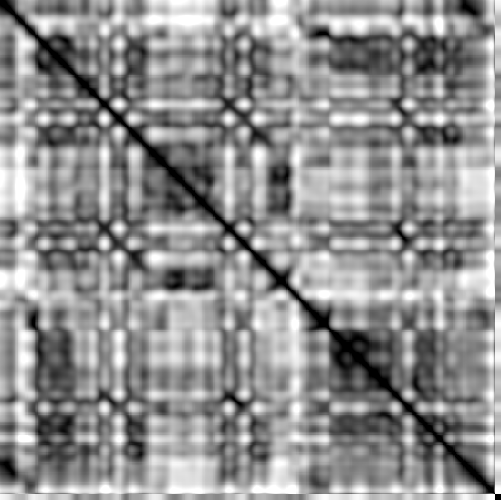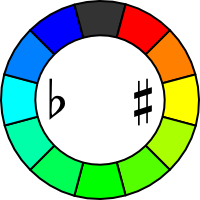05. Der Lindenbaum. (The Linden Tree)

Modified strophic form in E major containing six stanzas. [more]
Quantized and normalized chroma features (12 sec) which are correlated to harmonic and melodic progression. [more]
Singer: Gerhard Hüsch (Baritone), Piano: Hanns-Udo Müller. Recorded on vinyl, April-September 1933.
Source, License: EA Terms of Use
Information about our segmentation of »05. Der Lindenbaum«
Modified strophic form in E major containing six stanzas.
Coarse segmentation: ternary form ABA';
First part contains an intrumental introduction in E major as well as two slightly different segments which are divided by an intrumental interlude in e minor.
Both of these segments consists of two parts: Aa1+Ab and Aa2+Ab, respectively. The segment Aa1 corresponds to first stanza, Ab to second, Aa2 to third, and repetition of Ab to fourth stanza.
First segment Aa1+Ab is in E major; Aa2 and I2 in e minor, Ab is in E major again.
Middle part B has two subparts: one sung part and another instrumental interlude leading to the last part of the song.
This last part consists of repetitions Aa1, B, and I1. It corresponds to sixth stanza and its repetition.
Lyrics: Project Gutenberg
CENS (Chroma energy normalized statistics)
This feature corresponds to harmonic and melodic properties of a musical piece. Chroma features like CENS are computed by a window-wise subband decomposition of the audio file into semitones (pitches). For each pitch of an octave (C, C♯, D, ..., B), the corresponding pitch energies are summarized up, which reduces the influence of overtones. Subsequently, the resulting chroma features are quantized, smoothed (in temporal direction), and normalized with respect to the ℓ2-norm.
For transposition-invariant similarity, we compute a similarity matrix of the CENS feature sequence with a shifted version of it instead of the usual self-similarity matrix of the feature sequence with itself. Thus, we get 12 similarity matrices (one for each shift) and take the point-wise maximum afterwards. The brightness of the resulting matrix indicates this maximal similarity along all shifts, and the color indicates the index of the used shift. In the following figure the colormap of these shifts is shown.


Left: Linear shift scale from 0 to 11, Right: »Circle of fifths« notation.
One can see that our colormap is inspired by the circle of fifths where neighbor keys share similar colors. Black indicates no shift, red a shift towards the dominant key, blue towards the subdominant. The green colors are used for more distant keys. Note, that cyan and yellow correspond to the parallel major/minor key as well.
Literature
- Emilia Gómez: Tonal Description of Music Audio Signals, PhD thesis, UPF Barcelona, 2006.
- Anssi Klapuri: Multipitch Analysis of Polyphonic Music and Speech Signals using an Auditory Model, IEEE TASLP 2008, pp. 255–266.
- Meinard Müller: Information Retrieval for Music and Motion, Springer 2007, Section 3.3.
- Meinard Müller, Michael Clausen: Transposition-Invariant Self-Similarity Matrices, ISMIR 2007, pp. 47–50.
- Gregory H Wakefield: Mathematical representation of joint time-chroma distributions, ISOP 1999, pp. 637–645.
